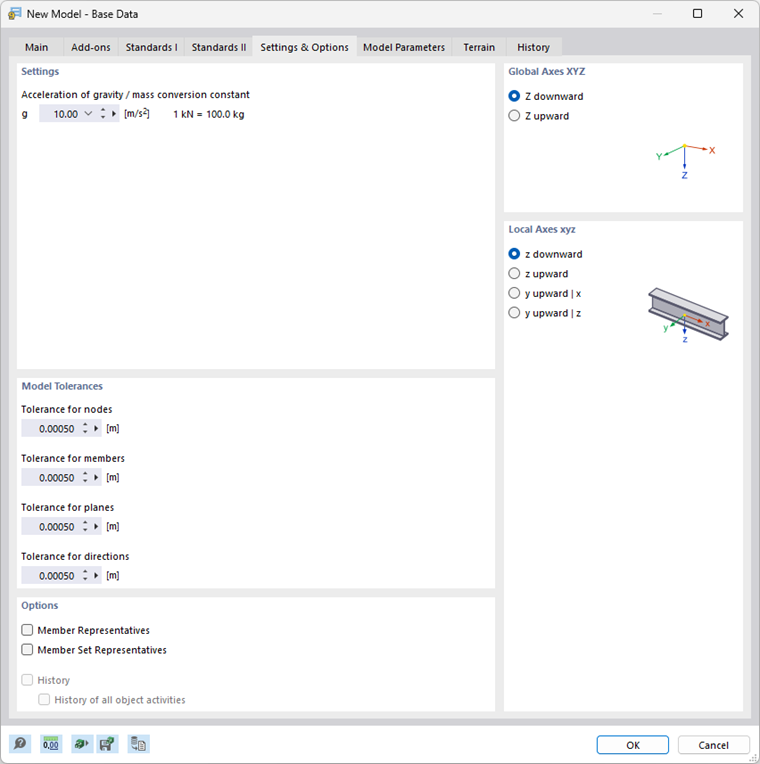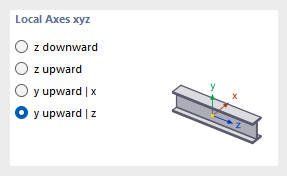In the Settings & Options tab, you can adjust the value for the acceleration of gravity, the geometric tolerances of objects, and the alignment of axes.
Settings
This dialog section manages the value of the "Acceleration of gravity" g. It is used for determining the self-weight of members, the conversion of masses, and for dynamic analyses. The approximate value of 10.00 m/s2 is preset.
Model Tolerances
When modeling or importing data from a CAD program, slight geometric differences may occur in the model objects. RSTAB corrects these inconsistencies automatically if particular distances fall below the "Tolerance" text boxes. Thus, nodes located very close to each other will be combined, members located outside of planes will be integrated into the respective planes, or minimally inclined members will be classified as vertical.
The preset tolerances are suitable for most models. In the case of small model dimensions, it may be necessary to adjust the tolerances accordingly.
Options
In this dialog section, you can decide whether you want to apply "representatives" for members and sets of members in the model. By activating the "Member Representatives" and "Member Set Representatives" check boxes, the corresponding tabs are added to the dialog box. They are described in the chapters Member Representative Wizard and Member Set Representative Wizard.
Global Axes XYZ
This dialog section controls the orientation of the global axis Z. In CAD programs, the Z-axis is usually directed upwards, and downwards in structural analysis programs. This is irrelevant to the calculation.
If Z is directed upwards, the factor -1.0 is automatically applied in Z for the "Active self-weight" function in the load case (see the chapter Load Cases ).
Local Axes xyz
The descriptions of the member axes are regulated differently in the standards. In this dialog section, you can define how the principal member axes z or y, as well as the surface axis z, are oriented in order to adapt the local axis systems to the regional conventions.
The positions of the local member axes are illustrated in the dialog graphic.

